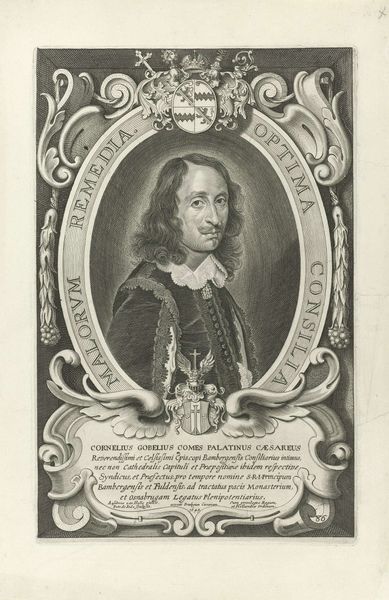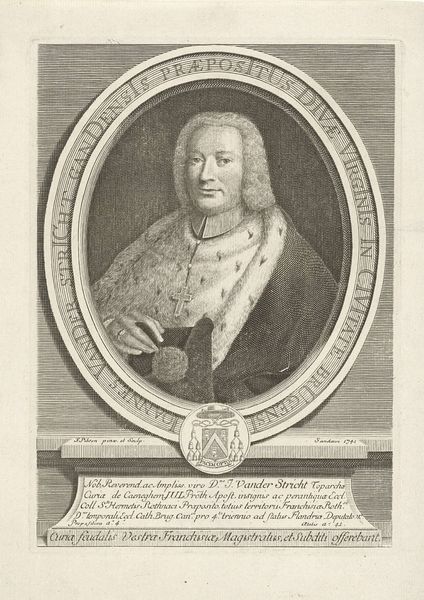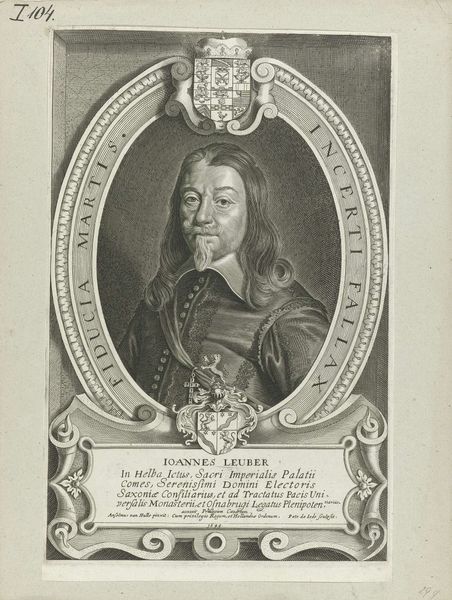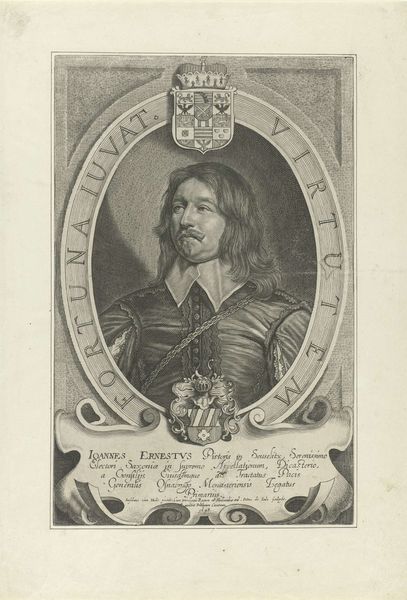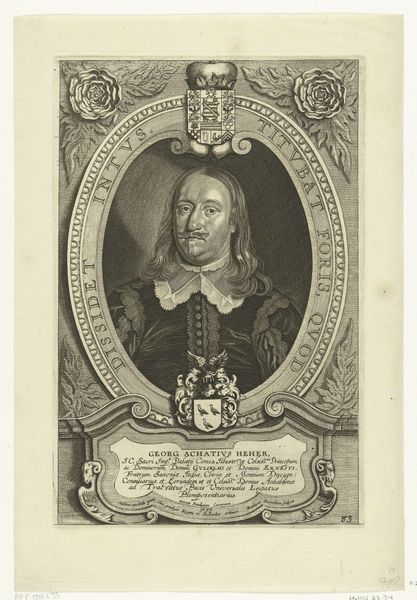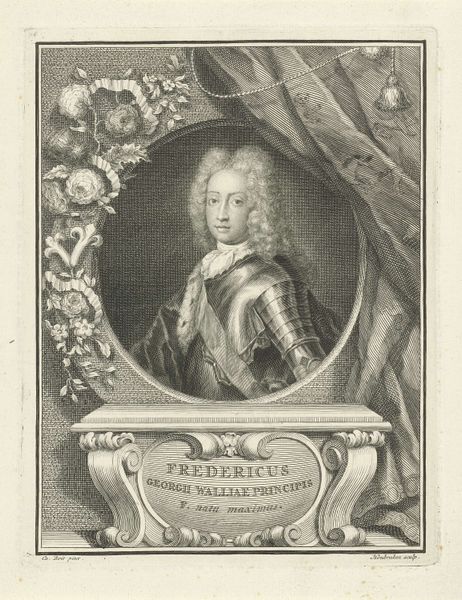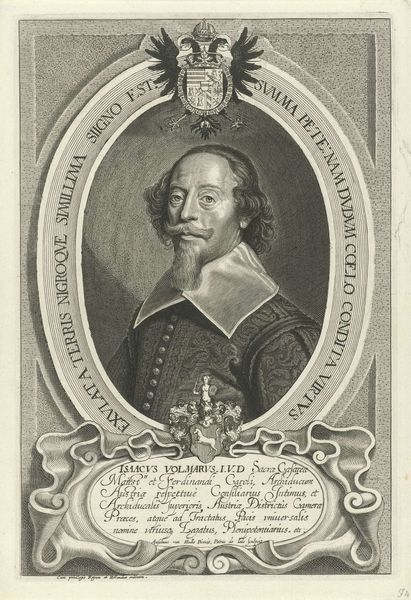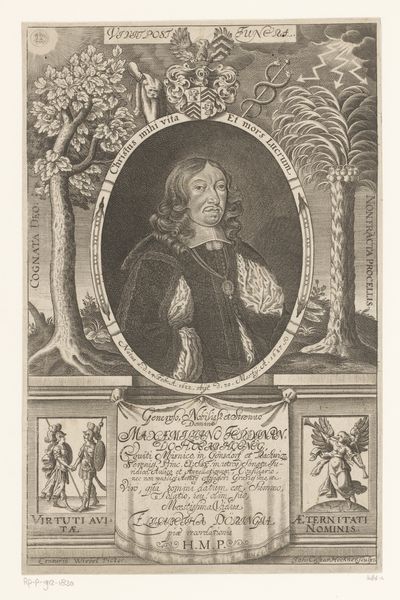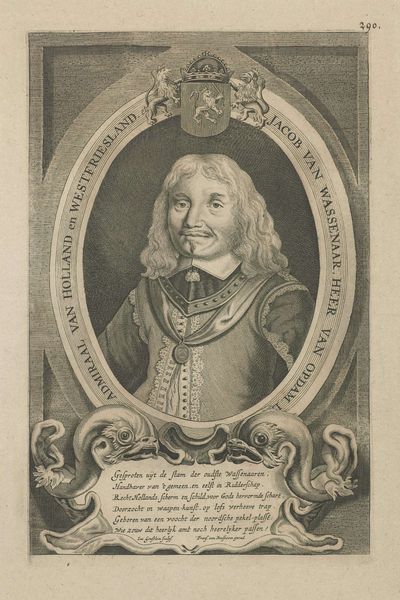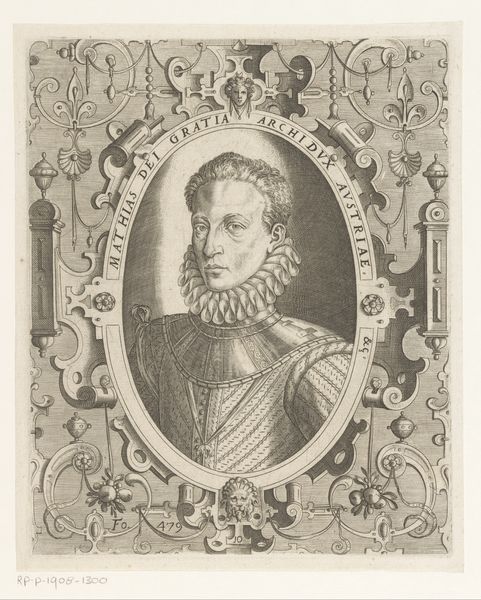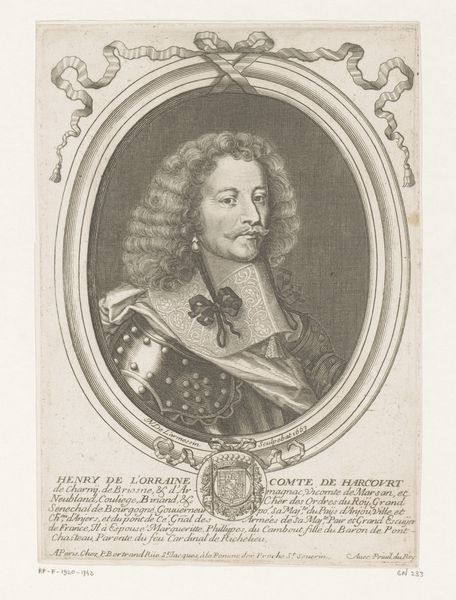
print, engraving
#
portrait
#
baroque
# print
#
old engraving style
#
history-painting
#
engraving
Dimensions: height 303 mm, width 206 mm
Copyright: Rijks Museum: Open Domain
Editor: This is "Portrait of Magnus Gabriel de la Gardie," a print made in 1649 by Pieter de Jode II, housed at the Rijksmuseum. The intricate details are captivating; it’s amazing all the information communicated through line and the layering of textures. What can you tell me about it? Curator: Let's think about the materials first. As an engraving, its production involved specialized labor. The metal plate itself – likely copper – needed to be sourced, prepared, engraved. The very act of making such a print signals something. Given the subject’s position, what societal factors allowed for this object’s creation and distribution? Editor: I see what you mean. Creating a print suggests an intention for wider circulation, right? Would the means of its creation relate to notions of status or power back then? Curator: Absolutely. Engravings such as this served as propaganda, effectively. Look at the framing; the elaborate details imply prestige and valor. What do the lions represent in that context? Think about the cost and time invested, and who benefitted. Who do you think might consume prints like this and where? Editor: So, not just about who is depicted, but also about the socio-economic relationships that made its creation and distribution possible. This provides context about its value and intended message. Curator: Exactly. Considering these prints as objects tied to labor, materials, and consumption gives us new ways to think about their meaning and purpose in 17th-century society. Editor: Fascinating. Thinking about art in terms of its material existence and social context gives a much deeper understanding of the work. Curator: Agreed. It reminds us that art never exists in a vacuum.
Comments
No comments
Be the first to comment and join the conversation on the ultimate creative platform.
